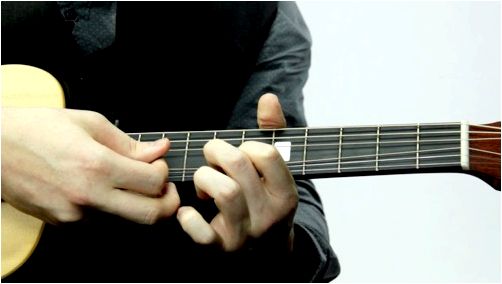Have an issue? Ask your personal!
The majority of the solutions listed here are about string bending and that i suppose you're worried about a Guitar Bend. Something similar to this:
Continue reading “Guitar bend”
Circuit Bent Instruments
Have an issue? Ask your personal!
The majority of the solutions listed here are about string bending and that i suppose you're worried about a Guitar Bend. Something similar to this:
Continue reading “Guitar bend”
Thanks for visiting the sixth lesson from the Lead Guitar Quick-Start Series. Within this lesson, we’ll check out the very first important lead guitar technique: bending. Bending is among the ways that you could increase the expression for your lead playing guitar. We’ll be covering two kinds of bends within this lesson, beginning with half-step bends and getting to whole-step bends.
Continue reading “How You Can Bend Post”
Thanks for visiting video six within the Lead Guitar Quick-Start Series. Within this lesson, we’re likely to learn an essential technique known as bending, which will help you express yourself inside your playing guitar. We’ll cover two kinds of fundamental bends within this lesson, beginning with half-step bends and getting to whole-step bends.
Continue reading “How You Can Bend Post”
By utilizing our website, you acknowledge you have read and understand our Cookie Policy, Online Privacy Policy, and our Tos.
Continue reading “Guitar bend”
I’ve been more and more intrigued by electronic music, sparked mainly by covering an exhibit of designer theremins for IEEE Spectrum in 2013, adopted by watching documentaries for example 2014’s I Imagine Wires, which traces a brief history from the modular synthesizer. One notable cohort in the current electronic music scene would be the circuit benders. These individuals modify a variety of audio-enabled equipment, including children’s toys and digital keyboards, to create sounds certainly not intended through the designers. Then when I stumbled upon the Casio SK-5 keyboard [pdf] I’d received in my 14th Christmas lurking within my parents’ attic room, I pounced.
Continue reading “How you can Bend a classic Casio Keyboard”

Hi, this really is Hub Guitar.
Let us discuss the guitar bend.
This method is very famous blues and rock, however it matches most styles good enough. You will not hear greatly in classical or jazz though. Remember that.
Let us consider using a couple of types of bending. We’ll begin the 3rd string, on fret VII. This can be a D note. We’ll bend up one half-step. I’m able to do this with any kind of my four fingers.
Now let us observe how far we are able to bend. With this, we’ll make use of the B string because the greater strings require less strength to bend. Let us fret “A” around the X fret from the B string, and bend up superiority.
Observe that bending really all messed up my tuning. I really need to retune the string after basically bend it an excessive amount of. Some rock guitarists nobody prefer to bend will really use special hardware to clamp the string in position and stop it from losing sight of tune. Average folks have to cope.
Yet another idea: let us perform a guitar lick having a small bend, after which move it lower by half-step and repeat. This may assist you to realize that the string has superiority of hysteria between its different points. It’s extended between both of these points, and also the tension around the string is greater because it will get for the finish. In order we all do this lick, the quantity of strength required to bend the note can change. This is exactly why you want to always follow what our ear informs us. You want to push the note up one half-step. We do not care what lengths we are pushing the string we’ll push the string before the note’s pitch has arrived at the main one you want to play.
Practicing bends can definitely grip your fingers and condition your skin around the fingertips, in addition to assist you to develop strength as well as enhance your ear.
Continue reading “Guitar Bend Technique Overview”

Continue reading “Guitar Bend Options dialog box”
Producing music from printers, hacking Speak ‘n’ Spells for backing vocals—it’s not trendy garage band style, however, it isn’t exactly rock ’n roll. A consider the engrossing realm of circuit bending.
I turn on my Casio SA-1, hit the trusty “demo” button, and—after I’m serenaded for any couple of excruciating seconds using the immense sonic ugliness of Wham’s “Jitterbug” (made entirely 32-note polyphony)—my finger hovers more than a big plastic key. A “num lock” key, salvaged from your old Acorn key pad, it protrudes rather incongruously in the pad of rubbery push-buttons usually accustomed to control the small instrument. Following a moment’s hesitation, I tap it. A circuit that I’ve connected messily to among the Casio’s microchips is finished and also the toy keyboard, bought for 50p in a charitable organization shop a couple of in the past, all of a sudden descends right into a rhythm loop sounding something similar to a vehicle crash being undergone an overdrive pedal. This really is circuit bending—not quite what Casio intended.
Continue reading “Bend Me, Shape Me”
By utilizing our website, you acknowledge you have read and understand our Cookie Policy, Online Privacy Policy, and our Tos.
Continue reading “Guitar bend”
This is Midfi Electronics “Random Number Generator”. It’s a radical fuzz that adds oscillation notes that randomly arpeggiate off of the fundamental note played. Crazy noise maker pedal. I’ve built several of these now by request. The owner of the design over at Midfi was gracious enough to share the schematic on the DIYstompboxes forum which is why I want to make it clear that this is NOT my design, and if you get one for me you are strictly paying me to make a clone since these aren’t available anymore. Continue reading “Random Number Generator”